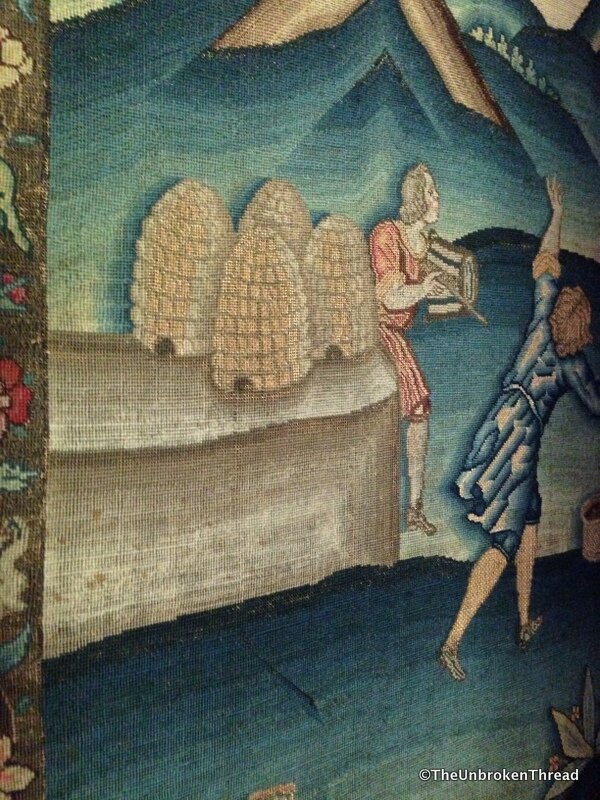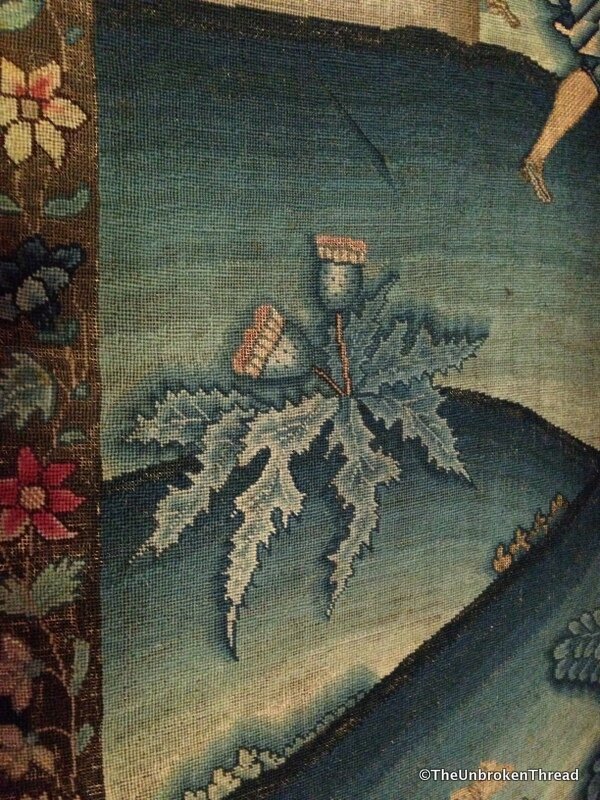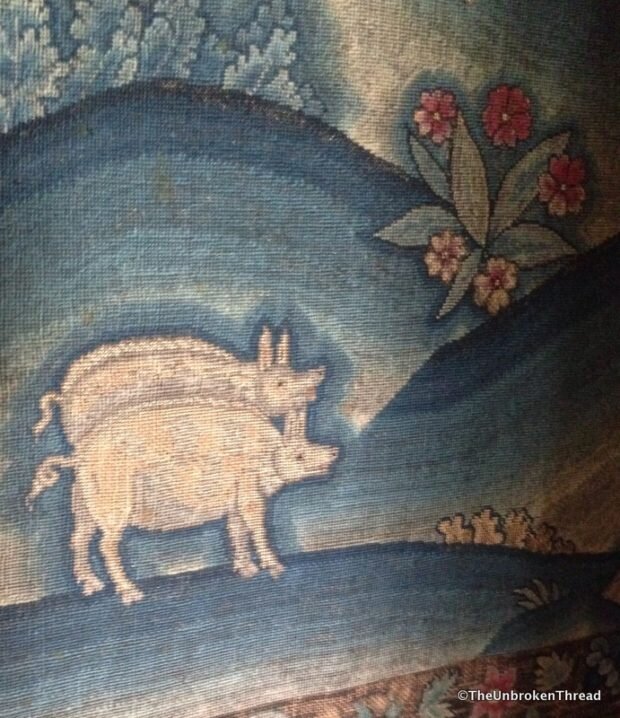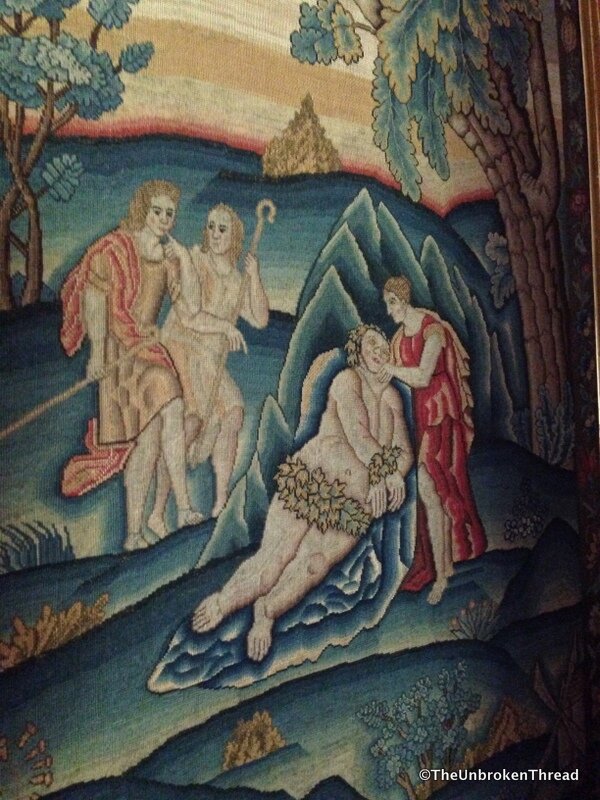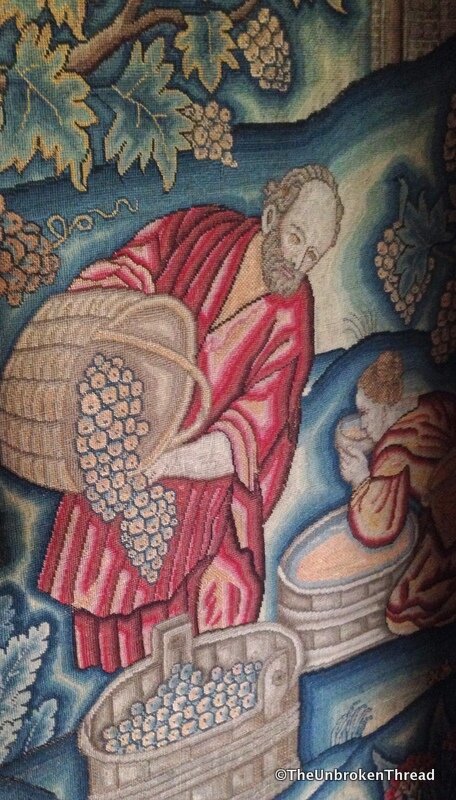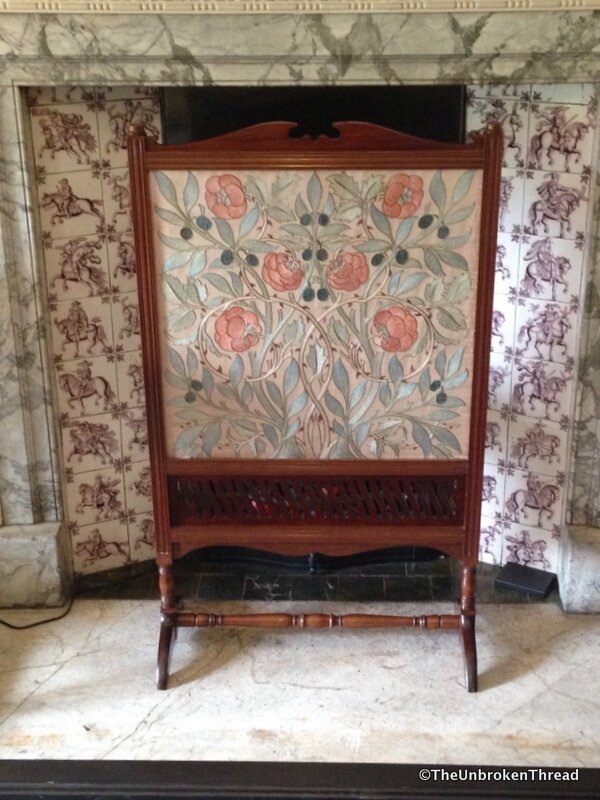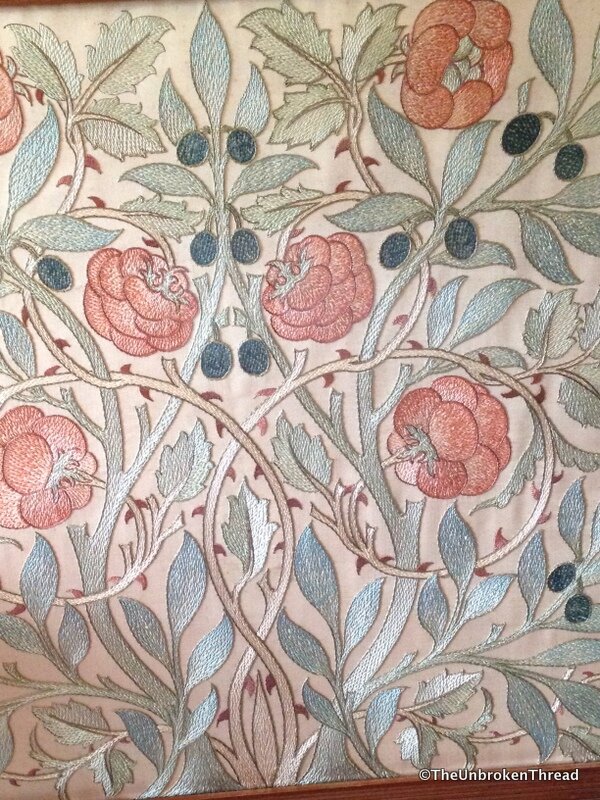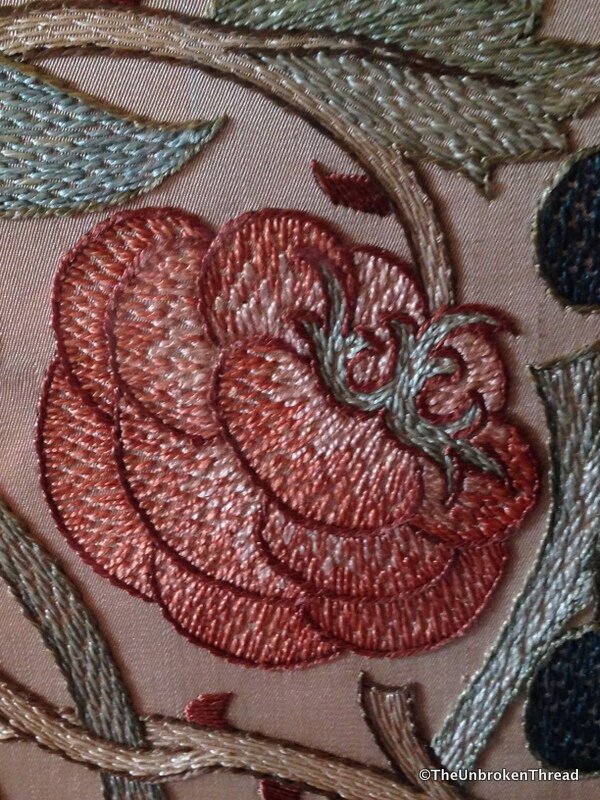When we were in the UK in June for the Distance Learner's Weekend at Stitchbusiness, we visited Wallington Hall on the same day we visited Seaton Delaval Hall. Looking back, it was great day for seeing needlework!As we walked into the house, I asked the steward who greeted us if there was someone who could show me any needlework that was in the house. I knew there was some in the house, but not the specifics of what was there.She took me directly to what's called the Needlework Room. The room is lined with ten panels by Julie, Lady Calverley and were influenced by oriental textiles. Each panel is filled with exotic birds and plants, all in brightly coloured wools and silks.An entry from Sir William Calverley's diary of 1716 tells us "My wife finished the sewed work in the drawing room, it having been three and a half years in the doing. The greatest part has been done with her own hands. It consists of ten panels." As you can see, there are also chairs worked in a similar pattern to match the panels on the walls. Unfortunately, the light in the room was very dim to protect the textiles so the close up photos of the panels I took are not of very high quality. Here are two of the "least bad". You can see the design better, but sadly the stitching isn't very clear. I can tell you that it is beautifully done.
As you can see, there are also chairs worked in a similar pattern to match the panels on the walls. Unfortunately, the light in the room was very dim to protect the textiles so the close up photos of the panels I took are not of very high quality. Here are two of the "least bad". You can see the design better, but sadly the stitching isn't very clear. I can tell you that it is beautifully done.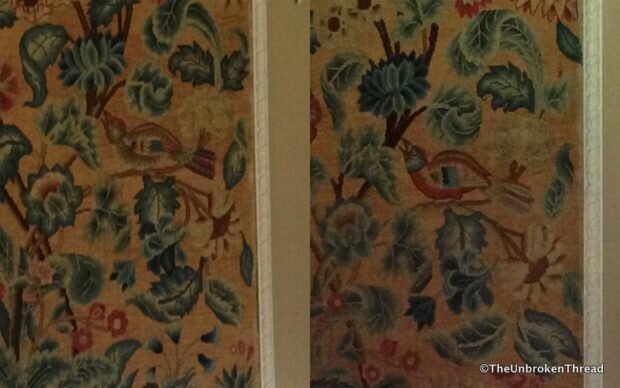 By a very lucky chance, there was also a large needlework screen in the room on the day we visited. It was being stored there temporarily and isn't usually on display.
By a very lucky chance, there was also a large needlework screen in the room on the day we visited. It was being stored there temporarily and isn't usually on display.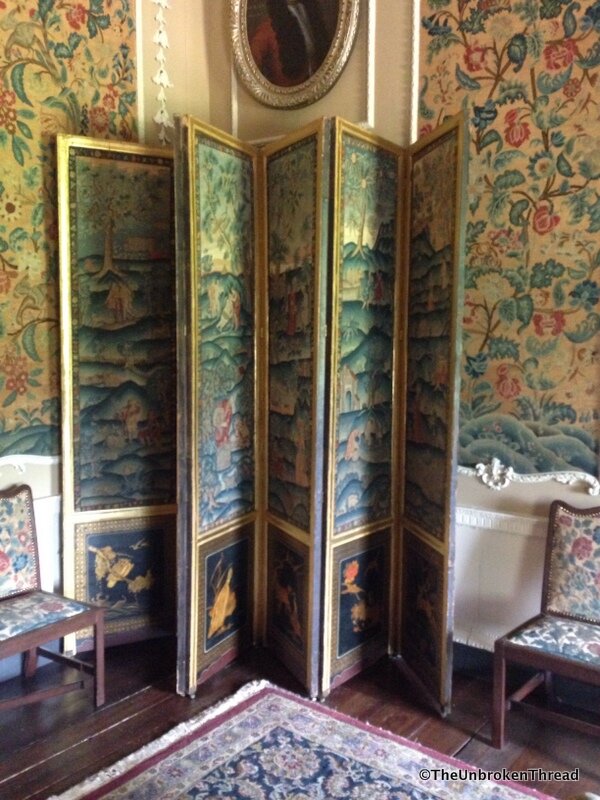
The steward kindly allowed me to step over the rope so I could get closer to the screen and take photos. In fact, she was quite happy that someone was so interested in something she thought was stunning but few visitors are interested in. Again, the photos suffer from a lack of light as the screen was folded and we couldn't open it out.
This screen was moved to Wellington Hall in Northumberland by Lady Cavlerley's son. In the inventory from the move it is listed as Item 17 "a six leaft skreen, Lady Cavlerley's work". Each of the six leaves five feet nine inches high and twenty and a half inches wide. It is signed and dated 1727 and was stitched with scenes from Virgil's Eclogues and Georgics in fine tent stitch on canvas in wools with some silk.
The needlework is done on a very fine canvas as far as I could tell. The steward wasn't able to tell me anything more. Maybe one of you, dear readers, can tell me more about this screen. The panels all have to do with life in the countryside - the ideal countryside. Above, you can see bee keepers.
Above, is a thistle that is huge in comparison with everything else on the panel! And below, two wonderfully happy pigs - they're smiling!
Below, are two shepherds and a woman who is comforting who looks to be Bacchus. I just love the details of the different kinds of tress.
Below is one of my favourite scenes: a man industriously making wine with a woman behind him drinking it! I'm sure she was the official taster...
After revelling in the Needlework room for a long time, I decided to explore the rest of the house, which is a stunning property. Well worth a visit, even if you're not interested in needlework! Downstairs, in one of the sitting rooms, I found a screen designed by William Morris and embroidered by the lady of the house, Molly Trevelyan.
It's always wonderful to find beautiful needlework in houses that we visit when we're in the UK!
Next time, a visit to the ancestral home of the first president of the United Stated, George Washington, Washington Old Hall.
 As you can see, there are also chairs worked in a similar pattern to match the panels on the walls. Unfortunately, the light in the room was very dim to protect the textiles so the close up photos of the panels I took are not of very high quality. Here are two of the "least bad". You can see the design better, but sadly the stitching isn't very clear. I can tell you that it is beautifully done.
As you can see, there are also chairs worked in a similar pattern to match the panels on the walls. Unfortunately, the light in the room was very dim to protect the textiles so the close up photos of the panels I took are not of very high quality. Here are two of the "least bad". You can see the design better, but sadly the stitching isn't very clear. I can tell you that it is beautifully done. By a very lucky chance, there was also a large needlework screen in the room on the day we visited. It was being stored there temporarily and isn't usually on display.
By a very lucky chance, there was also a large needlework screen in the room on the day we visited. It was being stored there temporarily and isn't usually on display.
